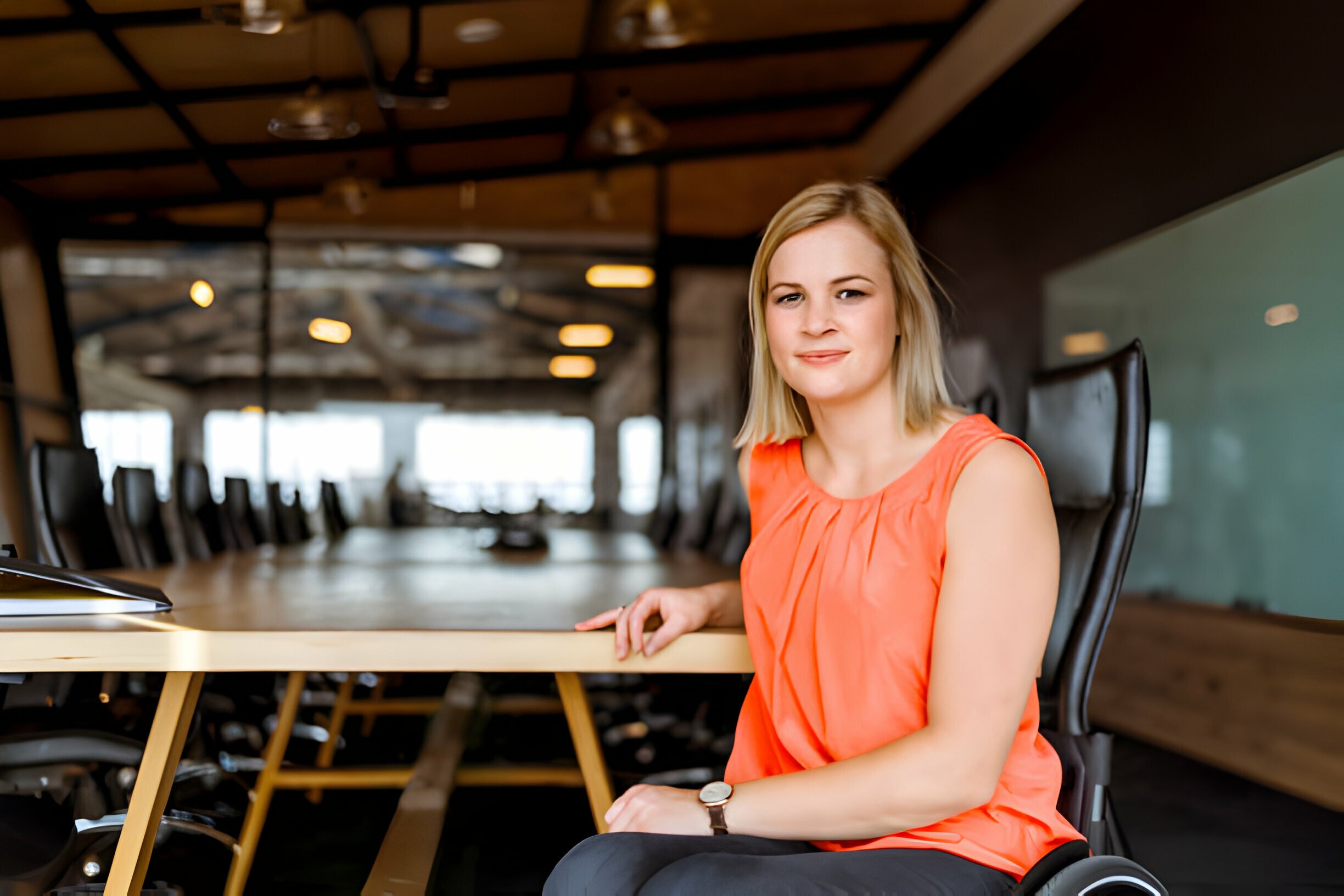A photo of confident businesswoman sitting on wheelchair. Portrait of confident female professional is in board room. She is in smart casuals at creative office.
In the realm of business, the dialogue around disability inclusion often mirrors a well-rehearsed play: grand declarations of commitment to diversity, equity, and inclusion (DEI) are made, yet the curtain falls before any meaningful action takes place. This dissonance between words and actions reveals a profound misunderstanding of what authentic disability representation entails. It's not just about filling quotas or showcasing diversity for marketing purposes; it's about fostering an environment where every individual, regardless of their abilities, can thrive.
The concept of the "Goldilocks nature of disability" in the workplace is a testament to this misunderstanding. On one hand, individuals perceived as "too disabled" are often overlooked, based on the erroneous belief that they will require excessive accommodations or will not be as productive. On the other hand, those who excel, thanks to necessary accommodations, face skepticism and accusations of exploiting their disability for benefits like telework. This paradox highlights a glaring issue: many companies want disabled employees to be just disabled "enough" to benefit the company's image but not so much that understanding and meeting their needs becomes a priority.
Caroline Casey, in her Forbes article, underscores the imperative of authentic disability representation noting, "Piecemeal efforts like basic accessibility compliance or tokenistic representation fail to shift norms: what’s needed is a seismic culture change in how disability representation is understood and embedded across organizations from media and marketing to product design and accessible retail spaces." This sentiment is echoed in the recent initiative by Starbucks, as reported by Axios, where the opening of their accessible store in Union Market is not just a nod to accessibility but a step toward setting new standards in how businesses can and should integrate accessibility into their core operations.
However, as someone who has advocated for accessible entrances at my local Starbucks for nearly a decade, with success only coming in January 2024, I can't help but view this development with a mix of appreciation and irony.
True inclusion requires a shift in mindset—from viewing accommodations as a burden to seeing them as an investment in a diverse workforce reflecting the world we live in. It's about recognizing that every employee brings a unique set of skills and perspectives that, when harnessed, lead to innovation and growth.
As we navigate the complexities of disability inclusion, let us challenge ourselves and our organizations to move beyond performative actions. Let's commit to listening, learning, and adapting. Let's strive for a workplace where everyone is not just accommodated but truly included and valued.
Authentic Disability Representation Is A Business Imperative

